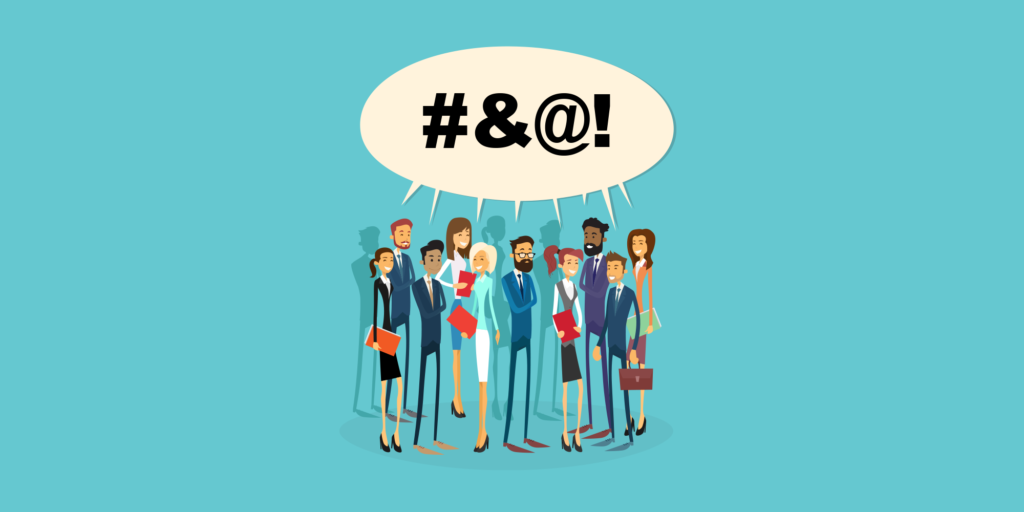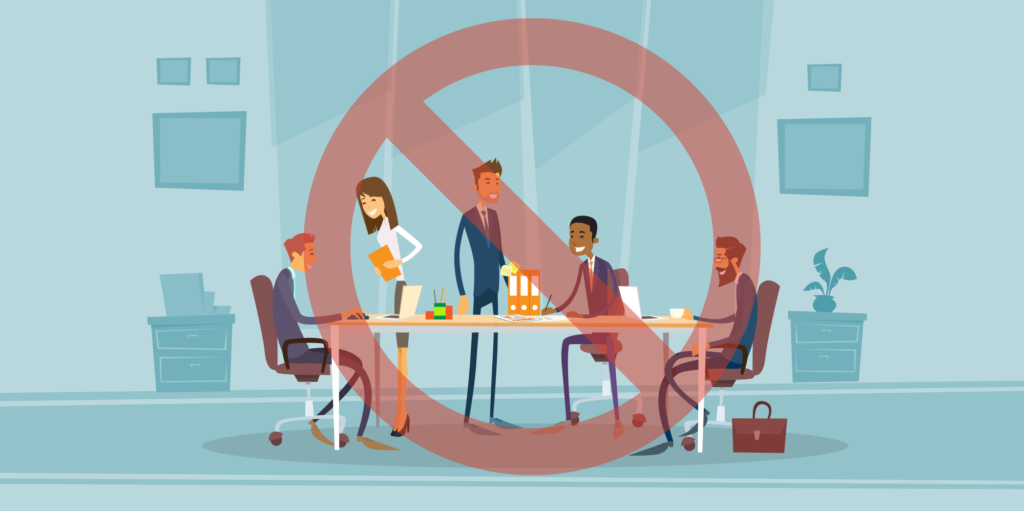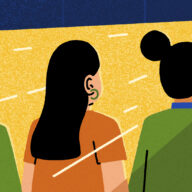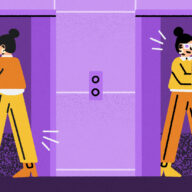
We’ve all been there. You’re on hour two of too many. The wall is covered in sticky notes. The coffee is running low. Everyone’s eyes are starting to glaze over. You’re thinking about all the work you aren’t doing while sitting in that room. And the three loudest people on the team are having an unofficial competition to see who can contribute the most ideas, quality be darned.
Welcome to the reality of the communal brainstorming session in most business settings today.
It’s a far cry from the romanticized Mad Men-style creative session, where everyone sits in a beautifully appointed conference room and spouts impromptu genius in turn.
As it turns out, brainstorming did come about during the actual “Mad Men” era. Pioneered by advertising executive Alex Osborn in the late 1940s, it served as a way to generate a large quantity of ideas in an environment where everyone’s ideas held the same weight, which definitely wasn’t always the case back then. By democratizing idea generation, Osborn surmised, the best ones would rise to the top.
More than ever, our knowledge workforce is primed for this kind of exercise. We prioritize collaboration in the workplace. The Millennial generation now makes up the largest percentage of U.S. workers and has been raised on collaboration since their toddler days. We literally knock down barriers to collaboration with open offices and workspaces designed to stimulate creativity.
Given all of this it makes total sense that when we need a lot of awesome ideas for a creative endeavor, we book a conference room and gather a bunch of brains around to collaborate through brainstorming.
But what if that’s just not how it works? What are we actually getting when we engage in a group brainstorm?
What Isn’t Happening During Your Group Brainstorm
First thing’s first—let’s burst the bubble of brainstorm theory to understand what isn’t happening while everyone is sitting around spitballing.
You know what’s a complete myth? That group effort results in more creativity.
Generally, we try group brainstorming when we want to create a lot of unfiltered ideas. We’re hoping the old adage of “many heads are better than one” gets us better ideas than if we all tackled the task independently.
The problem? Many heads in the same room doesn’t help us come up with better ideas at all.
In fact, a meta-analysis of 241 different studies involving 24,000 subjects in the Psychological Bulletin concluded that the presence of others barely had any effect on task performance at all, and definitely not in the way Osborn would have hoped. Overall, the presence of others “increases the speed of simple task performance and decreases the speed of complex task performance,” suggesting that higher-level tasks like creative thought would actually be impaired.
What’s Actually Happening During Your Group Brainstorm

Humans are social creatures. That doesn’t mean we all love being social, but rather that we are hardwired to respond in certain ways to the presence of other humans and their actions.
When we’re in a group, inevitably, group dynamics will take over. A few of them can be pretty harmful to the end goal of getting a bunch of good ideas out of a brainstorming session.
Here are some of the forces at play in your communal brainstorming session:
1. Everyone is playing too nice
We worry about what other people think of us. In a group setting, we’ll always have some concern for appearances present, which makes it harder to be truly free with ideas. The theory of evaluation apprehension suggests that group settings can impair our performance over the fear of being judged.
As a result, we can often be exceedingly nice to others to avoid being critiqued harshly in return. That makes for nice and polite workplace dynamics, but can be a lot less useful when workshopping ideas in a creative session.
2. People are making less effort than they would alone
The phenomenon of social loafing is a risk in any type of group meeting, including brainstorming. Basically, people don’t feel like they have to try as hard when they know there are plenty of other group members to pick up their slack.
If people are solely responsible for coming up with ideas and can’t rely on others to provide ideas instead, they’re much more likely to be motivated.
3. You’re not giving every member of the team a chance to contribute
The idea that all ideas are equal in a brainstorming session is a nice fantasy, but doesn’t often pan out in practice.
The turn-based structure of brainstorming rewards the ideas that get up on the whiteboard the fastest (a cognitive bias called “anchoring”). Once a few ideas have been proposed, those ideas percolate longer in front of the group and are given (maybe undue) weight over later ideas.
This unfairly punishes introverted team members who may take longer to volunteer ideas.
People also tend to automatically withhold ideas if they perceive others in the group as being more experienced. So unless you have a group of peers who think they’re all at the same experience level, perception of status could work against your group.
4. The group is trying to find the not-so-stellar middle ground without realizing it

Another social psychological phenomenon that crops up during group activities like brainstorming is a tendency to “regress to the mean.”
You may have heard this expressed in other ways. Sports teams “play down” to the level of their opponents. Similarly, in classic brainstorming sessions, more talented people with higher-quality ideas tend to want to match the performance level of less-talented peers.
Human social psychology prizes fitting into groups, and matching performance in this way fulfills that need in us – but also leaves us with a bunch of mediocre ideas.
Better Ways to Get Those Good Ideas You Wanted in the First Place
Group brainstorming as it was developed and as most of us practice it today? Not that effective.
The premise behind brainstorming? Logical and worth pursuing.
Working in groups yields amazing results. We are stronger as a group of individuals with individual strengths than we are alone. That part has never been in doubt.
As psychology professor Art Markman from the University of Texas at Austin told FastCo Design: “It’s not that people working together are never good. It’s just that the technique that Osborn developed was lousy.”
So, how can we do better?
1. Give your group the space to think through ideas independently
People operate at peak creativity when they’re alone—safe from unconscious bias, group dynamics, and potential interruptions. So if you’re looking for the highest-quality ideas, let people come up with those ideas in solitude.
Whether that means having people submit ideas through an online form generator or in writing (or perhaps a Trello brainstorming board!), make sure the initial brainstorm phase allows people to use their brainpower.
2. Someone needs to be “the decider”

Brainstorming isn’t a democracy, even though you’d like everyone’s ideas to be taken into account. You need a facilitator, at a minimum, to make sure the group session doesn’t go off topic or end up with a couple people dominating the conversation.
But beyond that, you need someone who will be ultimately responsible for picking the best idea, and this shouldn’t be done by acclamation. “Best idea” will mean different things to different people, but ultimately one person’s opinion should count for more.
This could mean the creative director gets the final say, or the account manager, or the client, depending on what you’re brainstorming about. But someone needs to be that buck-stopper.
3. Structure your process
Come up with a structure for your brainstorming and inform people beforehand. Structure, somewhat counter-intuitively, actually promotes creativity.
By forcing people to think along the same general outlines, you stop them wasting brain power exploring way beyond the creative pasture where you want them to graze. That means they can dig deeper in that smaller plot for those nuggets of creative gold.
Being forewarned of the structure (and the length of any meetings involved) helps the team prepare for what’s next, instead of worrying that they’ll be stuck in the room forever. Jay Acunzo of NextView offers an excellent brainstorming structure that encourages individual expression but also takes advantage of group creativity.
4. Pay attention to group dynamics
Be conscious of all the dynamics at play in your group, and be on the lookout for any behaviors that might be holding the group back. Actively working on your team’s emotional intelligence will help to facilitate more uninhibited creativity (read our tips on that here). Your structure should build in opportunities for everyone to contribute, and a facilitator should be in charge of the meeting, including deciding who gets to speak next and when the group will move on to the next topic.
Just Say No to the Conference Room

So next time you’re in a situation that seems tailor-made for a good ol’ brainstorming session, try resisting the temptation.
Consider using a process that prioritizes individual creativity and then apply the group dynamic to enhance existing ideas, instead of trying to generate them in a group setting.
We’re betting that no one complains when you fail to block out three hours in the Ponderosa Room with a giant flipboard and stacks of sticky notes – and you’ll end up with better ideas as a result.










































